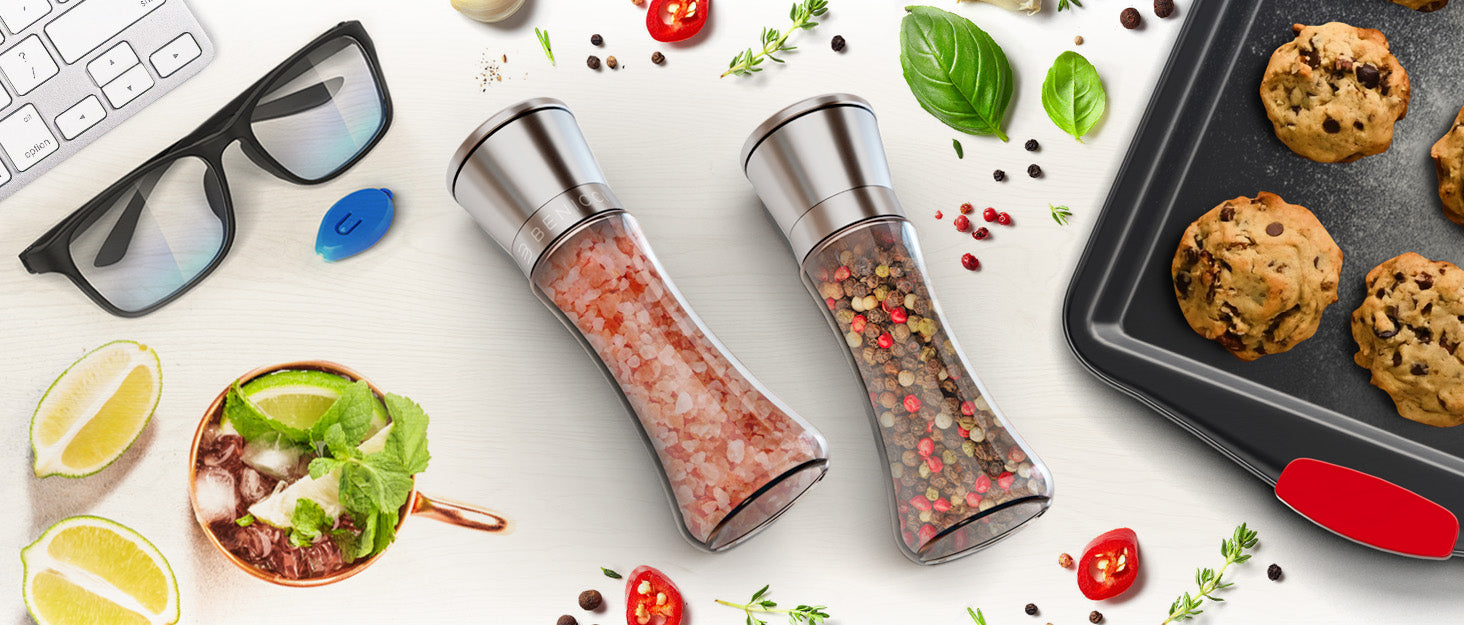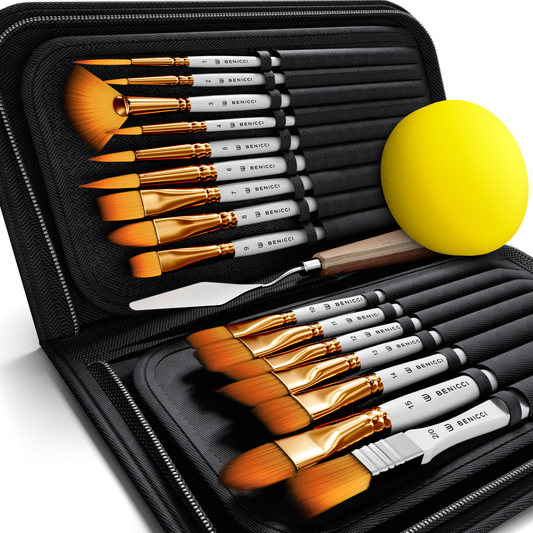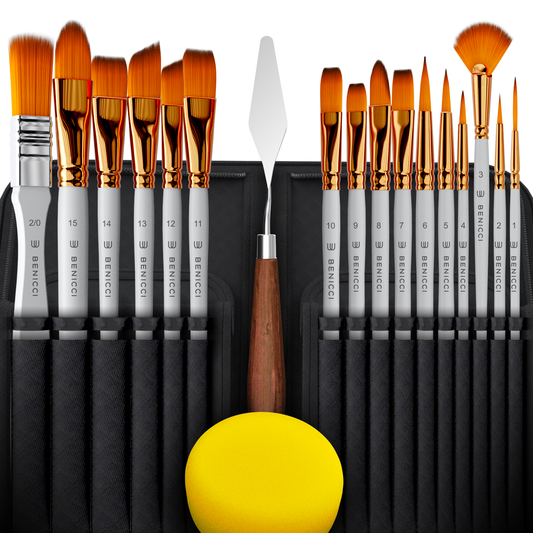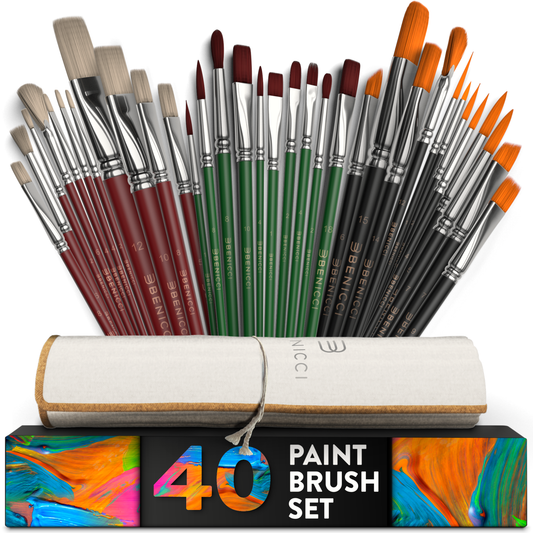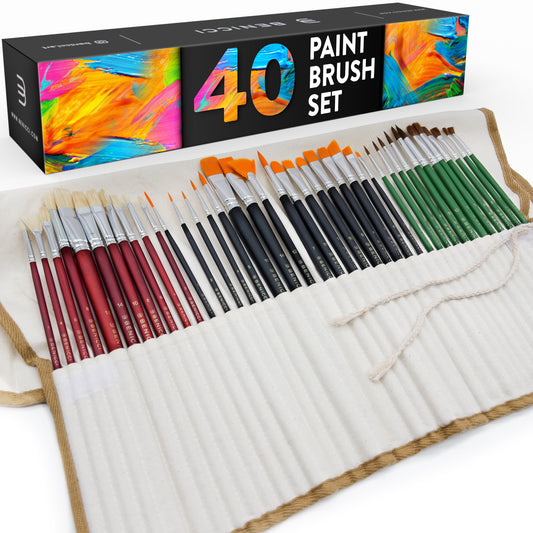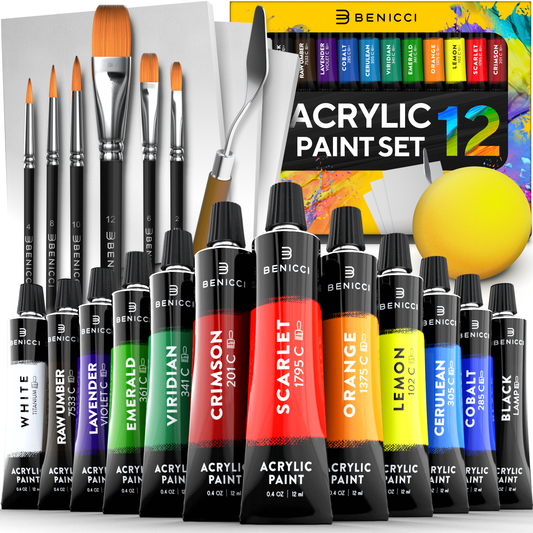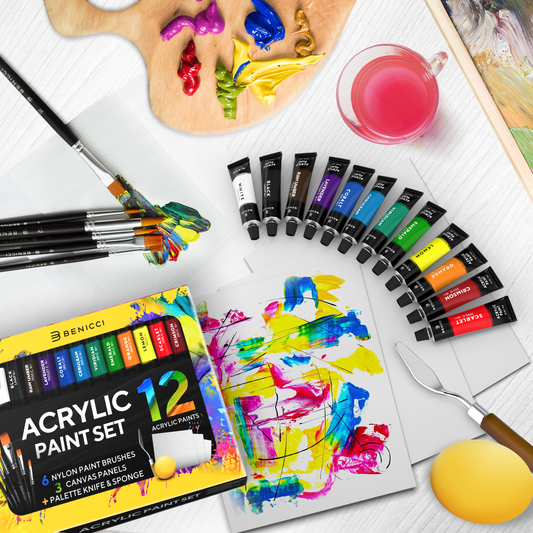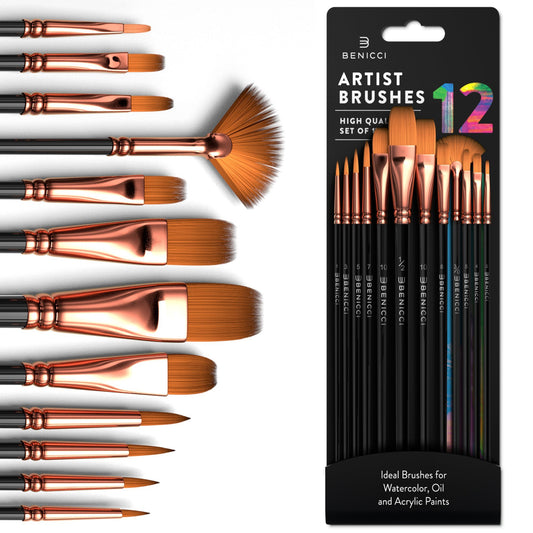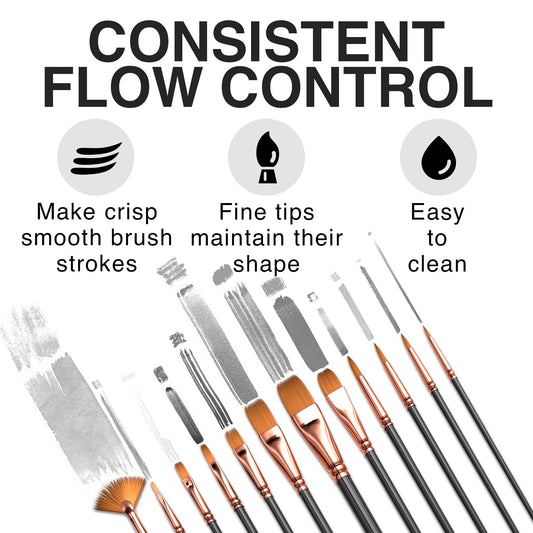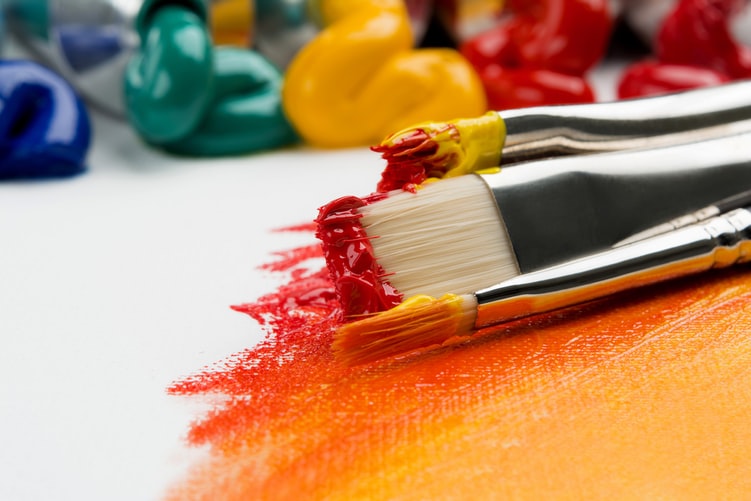
How to Clean and Store Brushes for Paint: Do's & Don't's of Brush Care
Share
Many painters are so eager to bring their ideas to life that they neglect the tools they use to do so. Low-quality brushes for paint are cheap, and it’s easy enough to use them once and discard them, or replace them after just a few uses. What if I told you that not only will you have a better painting experience with higher-quality brushes, but that caring for them will extend their life and improve your art?
It’s simple. Just follow these do’s and don’t’s for optimal paint brush care that will help both your art and your wallet.
Do: Get to Know Your Brushes
You probably know where to buy paintbrushes and which end to use, but do you know the anatomy of your brush? There are three parts:
- Bristles. These can be either natural or synthetic, each of which lends itself to different types of paint. Without proper care, these can become frayed, broken, or simply stained.
- Ferrule. This is the metal part that connects the bristles to the handle. In cheaper or ill-cared-for brushes, this tends to lose its “grip” on either the bristles or the handle over time, leaving bristles on your art. Yuck! Consider purchasing affordable yet high-quality brushes, such as the Benicci 16-brush set, whose bristles are double-clamped with extra strong ferrules.
- This is the part you hold. It too can become yucky, stained, or even broken over time. Look for easy-to-clean plastic, metal, or coated wood handles.
In general, you want to keep all parts of your brush as clean as possible. However, there are proper ways to clean them.
Don’t: Soak Your Brushes in Water and Hope for the Best
You should always clean your brushes immediately after use. Leaving them in a cup of water to “clean” them is about as effective as leaving your dishes in soapy water. It makes you feel like you cleaned up, but it’s a lie. Plus, extended soaking can actually soften the glue attaching your ferrule to the handle, which defeats the purpose of the brush.
Do: Know How to Clean Your Brushes
Water alone won’t cut it and actually won’t effectively clean some types of paint off your brush.
- If you’re using water-based paints, use soap and water. Watercolors and acrylics can be easily washed off with hand soap, dish soap, or specialty soap that you can buy at an art store.
- If you’re using oil paints, use a solvent first, then soap and water to remove the solvent. Solvents include mineral spirits and turpentine, but these can wreak havoc on your bristles. Follow up with a special bristle moisturizer, Murphy’s Oil Soap, or in a pinch, Dove hand soap.
Don’t: Scrub the Brushes
Many people will mash the bristles into the bottom of a jar or the palm of their hand to force the paint off. I don’t know where this awful cleaning “technique” came from, but it’s the best way to ruin your brushes. This method spreads the bristles apart and shoves paint inside the ferrule, which can damage even Benicci’s strong ferrules. Here’s how you should clean your brushes instead:
- If you’re washing with water: Gently swirl the bristles under a stream of water as it mixes with the soap in the jar or your palm. Be sure to clean the ferrule and handle as well. Let air-dry.
-If you’re using solvent: Gently stroke the brush against a rag or paper towel until the bulk of the paint is off, then swirl the bristles in a small amount of solvent until the rest is gone. Rinse off the solvent. Let air dry.
For a demonstration of proper cleaning technique, watch our video featuring the Benicci 16-brush set.
Do: Salvage Your Yucky Brushes
It is possible to rescue brushes that you forgot to clean immediately. To do so, boil the entire brush in a pot of vinegar. Remove the brush, wait until it cools off, then gently comb the bristles until the caked-on paint falls away. If your brushes have dried-on acrylic paint, you can also use denatured alcohol to remove it. Of course, you’ll have more free time if you clean your brushes right away. Did you learn your lesson?
No matter which type of paint or cleaning agent you’re using, the key is to be gentle with the brushes. Scrubbing, mashing, or spreading the bristles are all good ways to shorten the life of your brush. And damaging the bristles can distort the shape of your brush, making it super hard to make the shapes and textures you want on your canvas. With proper care, your brushes will help make your art better.
